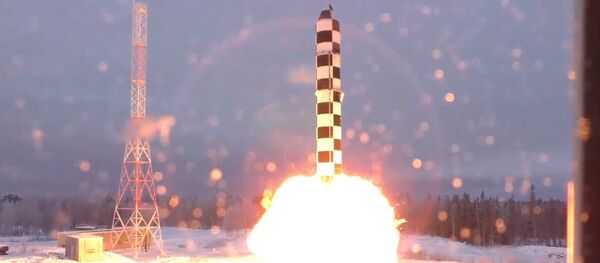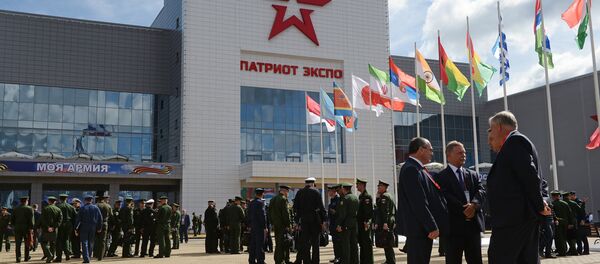“Burevestnik” (Stormbringer) was chosen as the name for the state-of-the-art nuclear-powered cruise missile after 34.8 percent of participants voted for it, with “Palmyra” trailing closely behind garnering 33 percent of votes, and “Surpriz” (Surprise) bringing up the rear with 32.5 percent.
The nuclear-powered underwater drone capable of blasting coastlines with a nuclear device has been christened Poseidon (almost 36.9%) just ahead of Aurora (32.5%) and “Priboi” (Surf) favored by about 30.5 percent of voters.
Hours after President Putin had announced Russia’s latest weapons during his March 1 address to parliament in Moscow, the Defense Ministry switched on a web portal inviting people to submit names for any of the three new weapon systems.
Also shown during President Putin’s address was footage of Russia's new hypersonic Sarmat ICBM, which is capable of overcoming missile defense systems.
Capable of carrying a wide range of nuclear weapons, the Sarmat system is able to strike its targets up to 16,000 kilometers (9,940 miles) and attack across both the South and North Poles.
Vladimir Putin emphasized that Russia was threatening no one and its weapons were only meant to “ensure the country’s security.”
Meeting with members of the Senate Armed Services Committee on Friday, General Lori Robinson, head of the US Northern Command and North American Aerospace Command, said that Russia’s next-generation cruise missiles are capable of hitting targets throughout the United States.
General Robinson said she was “concerned” about the potential for those advanced cruise missiles, which could be launched from bombers or submarines at much greater ranges than legacy systems, to penetrate our air defense network due to their expanded range, low visibility, and limited radar cross section.”
READ MORE: President Putin Reveals Two Cases When Russia Can Use Nuclear Weapons




